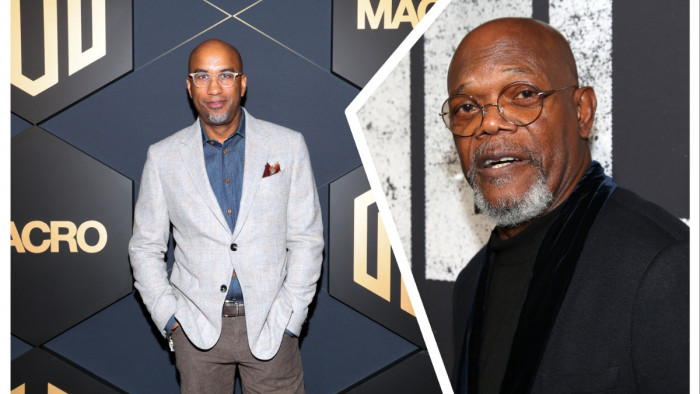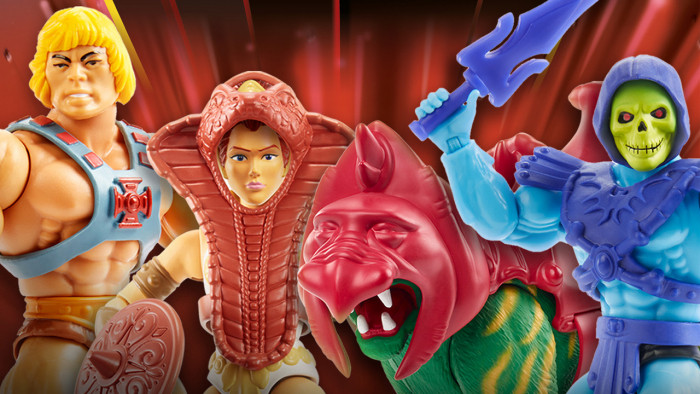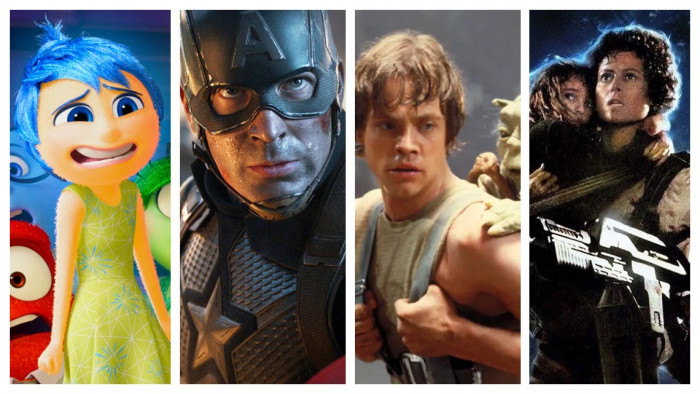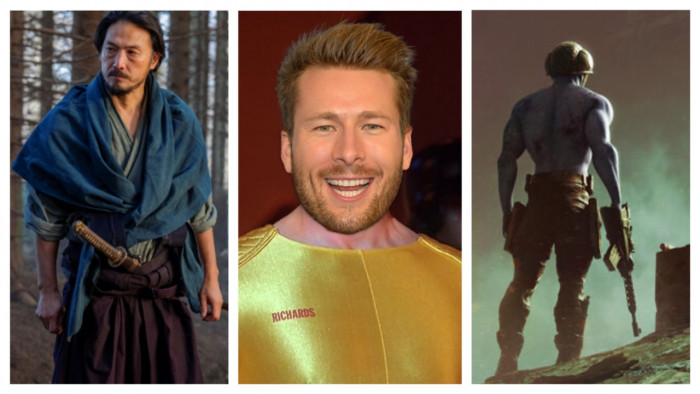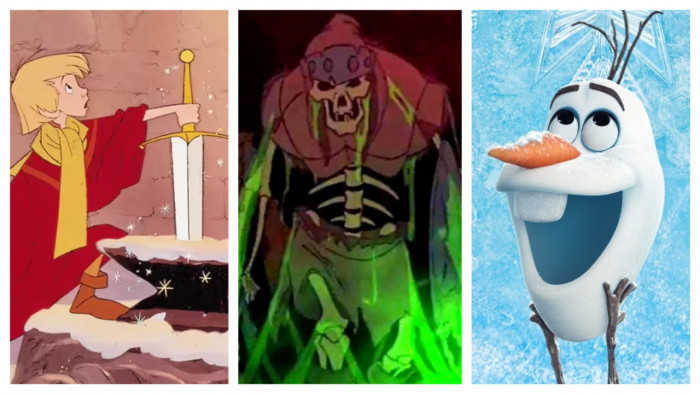Making an animated film isn’t as easy as pointing a camera at some actors. Alex Christian visits the studio to find out how it’s done
It started with a lamp. Two of them, in fact: a large one, Luxo Sr, and a smaller one, Luxo Jr – a hopping Anglepoise obsessed with inflatable balls. Released in 1986 and running at under two minutes, Luxo Jr was Pixar’s first film. It took eight people 250 days. Skip forward nearly 30 years, and things are a bit different. Making a Pixar film in 2015 takes six years with a crew of hundreds.
What takes them so long? We went to the studio in California to find out how they made the newie, Inside Out.

Six years to go
As soon as a new Pixar film hits cinemas – typically to a huge box office and ecstatic reviews – prospective directors pitch ideas to the Pixar Braintrust. It’s a fluid group of the studio’s creative leaders that typically includes the likes of Toy Story director John Lasseter, Wall-E’s Andrew Stanton and Pete Docter, the man responsible for Monsters, Inc. In spring 2009, Docter sat facing the panel. He’d spent half a decade crafting Up, but didn’t entertain taking a break – he had three film ideas he wanted to pitch. And the one that gets the go-ahead from the group is an idea inspired by his daughter, Elie – specifically, him wondering what was happening in her head that changed her from a joyful child into a moody, monosyllabic pre-teen.
What really grabbed the group’s attention was when he said she wasn’t going to be the main character, she was the setting – it would focus on characters inside her mind.
The next stage is approval from Disney. Then the director has to develop the idea, forming the main character’s story arc. Docter’s film is formally approved for production in October 2009 as one of Pixar’s eight ongoing projects, but at this time, most of the studio’s attention is focused on Toy Story 3, which is due to be released the following year.
Five years to go
A small crew has been assigned to the film and is halfway through the gruelling 12-month process of designing the characters and the plot drawing, redrawing and storyboarding. Ideas aren’t written, they’re sketched, as artists attempt to translate the director’s ideas into visuals. Thousands of drawings are done every day. In the case of Inside Out, this is where the central idea of five emotions – Joy, Sadness, Anger, Fear and Disgust – that guide the 11-year-old Riley through her life is born. The concept of ‘Headquarters’, the control room inside her mind, is also coined.
“Inside Out is a film about growing up, the joy and tragedy of that,” says Docter. “Part of growing up is learning how to control your emotions. That became the movie’s central idea – how these emotions would work together to do what’s best for Riley.”
As the storyline is fleshed out, the production designer begins to build the story’s world. Pixar veteran Ralph Eggleston designs Inside Out’s real world of San Francisco and the mind world of Headquarters. He consults with neuroscientists to help create the locations in Riley’s brain, taking cues from DNA strands and images of neurons firing in the brain. But it’s not just science – he also has David Hockney prints from his mid-Nineties installation ‘Snails Space As Vari-Lites: Painting As Performance’ on the walls.

Four Years to go
From the hand-drawn sketches, the art director builds the characters’ designs, often using everyday items as references. For Inside Out, and the character of Joy in particular, pinwheels, Champagne and sparklers are all used as ideas to depict her effervescence. “We liked the idea of emotions being made of energy,” says character art director Albert Lozano. “From early on, we were drawing Joy with light trails behind her – that’s where things like Champagne came in. Audrey Hepburn was a reference, too – for her haircut.”

Three Years to go
While production and art teams design the film’s world, editors cut the hand-drawn storyboards with music, sound effects and dialogue voiced by the crew ahead of a full 90-minute screening for the Braintrust. The likes of executive producer John Lasseter note what the story needs and the crew returns to work. It’s a process repeated again and again, with the story being constantly revisited over the next two years.
“We had so much freedom, depicting the interior world of someone’s head, that we had no rules – it sounded great,” says producer Jonas Rivera. “But it almost became the movie’s curse – nothing was grounded. We’d get into debates about whether tables could exist in the mind and if a character pressed a button, how did that button get there?” After the fifth screening, the new film is officially announced and given the standard title prefix The Untitled Pixar Movie... The working title for Inside Out was The Untitled Pixar Movie That Takes You Inside The Mind. The film crew trebles to nearly 50 people.
Once characters are designed, they’re passed to a sculptor who makes a 3D model. Once approved by the director, the design is built using computer. The director of photography begins picking the best camera angles.

Two Years to go
Production officially begins, meaning Pixar animators finally join the crew, which now numbers 75, and vocal talent is cast. They begin to record their lines at Pixar Studios – a process done every few weeks, meaning actors can easily work on other projects. Tom Hanks was filming Sleepless In Seattle as he was recording his lines for Toy Story. The actors can also inform their character’s final design – Sadness’s appearance in Inside Out is heavily influenced by actress Phyllis Smith. “The casting of Amy Poehler as Joy was crucial, too,” says Docter. “At one screening we had a note that read, ‘The story’s working, but I don’t like your main character.’ That’s a pretty big deal. Amy’s work really turned it round.”
18 months to go
Location designs are complete (the Headquarters has had 300 redesigns) as are the characters. Joy is acknowledged as being Pixar’s most challenging character ever to design – rather than being solid, she’s made from thousands of twinkling particles of energy. It took 11 designers more than 11 weeks to perfect her look.
Every scene goes through ‘shot building’, with the smallest of character expressions and movements layered over 1,600 shots. It takes an average of three weeks to complete three seconds of animation. The director and animators go through the dailies and note what the animation needs, a process that goes back-and-forth until the director gives his ‘final’ to shots, meaning they’re approved and can progress to lighting and rendering.
“You’d be surprised how intense it gets considering it’s a six-year film,” says Docter. “You go, ‘Why is every minute of my day so stressful?’ Once shots are finalled you feel like you’re getting there.”

One Year to go
The film’s story is locked by the Braintrust. The crew now numbers more than 200 people. The cast finish recording their dialogue.
Six months to go
Background graphics are added. The director ‘finals’ every frame. The cinema trailer is cut.
Three months to go
Lighting and shading are added, and every frame is put through Pixar’s RenderMan software to produce the final on-screen image.
One month to go
The film is cut together with its score, the final sound mixing is completed and the film wraps. But only for its English language release – it has to be dubbed into as many as 40 languages. Although it will already have its localised title, such as Carl Ojiisan No Soratobu Le (“Grandpa Carl’s Flying House” – Up) in Japan.

Opening Weekend
After six long years, Inside Out opens in the US. It smashes box-office records and is showered with praise by critics who call it a “modern animated classic”. But Pixar has already moved on. Its next film The Good Dinosaur (which has undergone something of a troubled production, changing directors in 2013) is six months away – the first time the company will release two films in the same year. Further ahead, aquatic sequel Finding Dory is due in cinemas next summer, while 2017’s Toy Story 4 is at the character design stage. And that’s without mentioning Cars 3, The Incredibles 2 and three more untitled projects that are ongoing, and will take us through to 2021.
Oh, and based on our calculations, isn’t Pete Docter due to pitch his next Elie-inspired film to the Braintrust any day now?
Inside Out is at cinemas nationwide from 24 July
Latest
Related Reviews and Shortlists


The 10 best war movies of the 21st century




